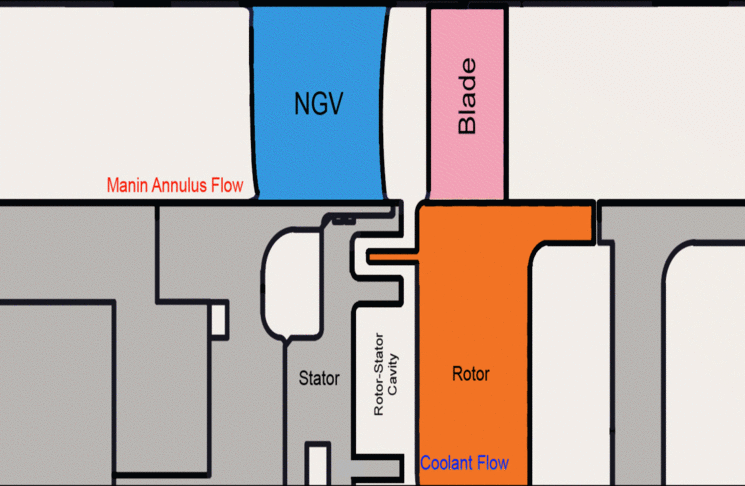Rotor-stator cavity and rim-seal research

- Rotor-stator cavity (text version)
Cross-section of a gas turbine showing the main annulus flow passing through the nozzle guide vanes (NGV) and rotor blade. Below this, a cavity exists between the stationary stator and rotating rotor.
Ingestion of gas from the hot turbine passages into the rotor-stator cavity can have catastrophic effects on the engine as it impacts the thermo-mechanical growth, and the thermal integrity of the discs & the blades mounted on them. Our research on sealing and aero-thermal interactions aided by world-leading test facilities and computational tools continues to help aero/gas-turbine engine manufacturers to design safe and efficient engines of the future.” Dr Vasudevan Kanjirakkad
Senior Lecturer in Experimental Thermofluid Mechanics
A well-designed rim-seal and an ideal amount of purge air is essential, but the complex geometries involved and the range of working conditions that the engine operates through any single mission makes the aero-thermal management of the wheel-space difficult. We employ unique engine-realistic experimental rigs with high-density instrumentation and numerical modelling to understand the prevalent physics and to arrive at optimal sealing solutions. The high-quality test data that we produce is also useful in creating or calibrating reduced order analytical models that aid fast and accurate design and analysis of related components.
The current research looks at the cavity aerothermal behaviour and the effects of its interaction with the turbine stage for a range of purge-flow condition.